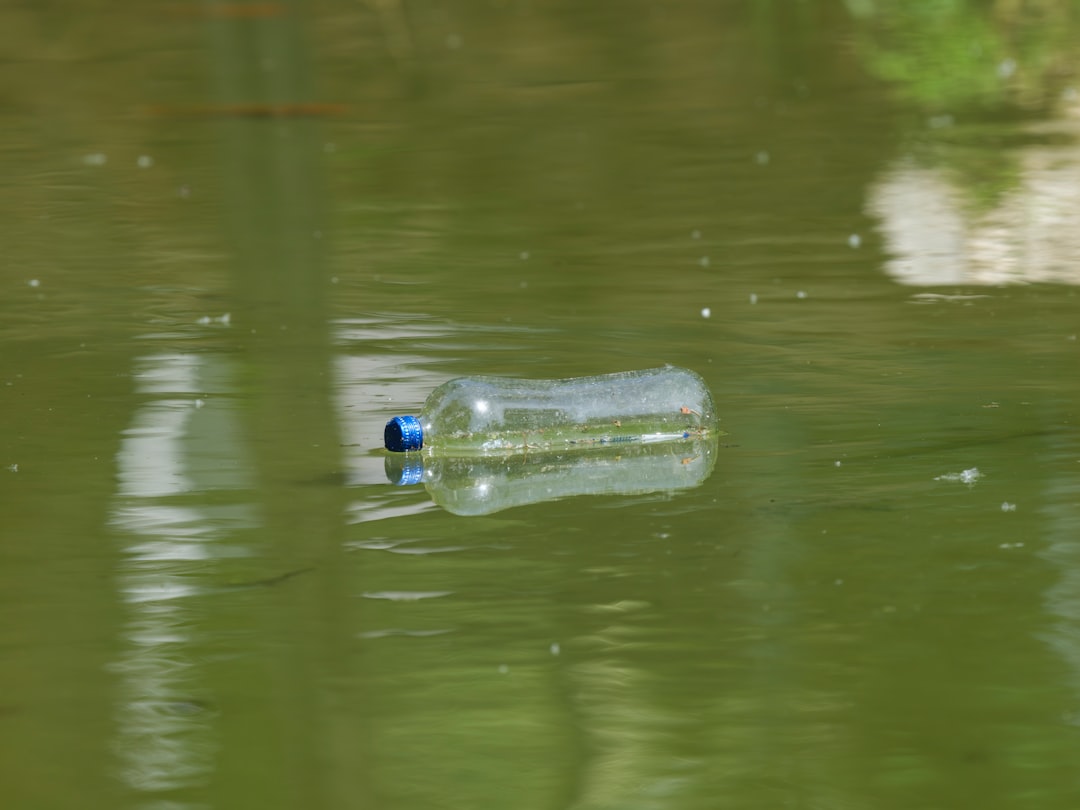Spring water is a natural resource that has captivated consumers for centuries, often regarded as a healthier alternative to tap water. It is sourced from underground aquifers and emerges at the surface, typically enriched with minerals that can enhance its flavor and health benefits. There are several types of spring water, each distinguished by its source and mineral content.
For instance, artesian spring water comes from a well that taps into a confined aquifer, where the water is under pressure, allowing it to flow naturally to the surface without the need for pumping. This type of spring water is often celebrated for its purity and mineral richness. Another category is mineral spring water, which contains a higher concentration of dissolved minerals, such as calcium, magnesium, and potassium.
These minerals not only contribute to the taste but also offer various health benefits. Additionally, there is sparkling spring water, which is naturally carbonated or has carbonation added during bottling. This effervescence can make it a refreshing alternative to sugary sodas or other carbonated beverages.
Understanding these distinctions is crucial for consumers who wish to make informed choices about their hydration options.
Key Takeaways
- Spring water types vary based on source and treatment, affecting quality and taste.
- Labels can be misleading; understanding terms like “natural” and “purified” is crucial.
- The source location impacts water purity and mineral content significantly.
- Environmental and ethical concerns arise from bottling practices and industry marketing.
- Choosing the best spring water involves considering health benefits, regulations, and sustainability.
Decoding Spring Water Labels: What to Look For
When navigating the myriad of spring water options available on store shelves, consumers often find themselves overwhelmed by the variety of labels and claims. To make an informed decision, it is essential to understand what specific terms mean. For instance, terms like “spring water” and “artesian water” should be clearly defined on the label, indicating the source and method of extraction.
Additionally, consumers should look for information regarding mineral content, as this can significantly affect both taste and health benefits. Another critical aspect to consider is the presence of certifications or seals from recognized organizations. These endorsements can provide assurance regarding the quality and safety of the water.
Furthermore, consumers should pay attention to the bottling date and expiration date, as freshness can impact taste and quality. By carefully examining these details, individuals can better navigate the complex landscape of spring water options and select products that align with their preferences and health goals.
The Importance of Source and Location

The source and location of spring water play a pivotal role in determining its quality and characteristics. Water that originates from pristine environments, such as protected mountain ranges or remote forests, is often considered superior due to its lower likelihood of contamination. The geological composition of the area also influences the mineral content of the water; for example, limestone-rich regions may produce water high in calcium and magnesium, while volcanic areas may yield unique mineral profiles.
Moreover, the environmental conditions surrounding the spring can affect its sustainability. Areas with heavy industrial activity or agricultural runoff may compromise the purity of the water source. Therefore, consumers should be aware of where their spring water comes from and whether the source is protected from potential pollutants.
Understanding these factors can help individuals make more responsible choices regarding their hydration sources.
Uncovering the Truth about “Natural” and “Purified” Spring Water
| Water Type | Source | Common Contaminants | Filtration Process | Mineral Content (mg/L) | pH Level | Typical Uses |
|---|---|---|---|---|---|---|
| Natural Spring Water | Underground springs | Trace minerals, natural sediments | Minimal filtration (usually sediment removal) | 50-250 (calcium, magnesium, potassium) | 6.5 – 8.0 | Drinking, cooking, health supplements |
| Purified Spring Water | Spring water source | Removed contaminants including bacteria, chemicals | Reverse osmosis, distillation, or deionization | Less than 10 (minerals mostly removed) | 6.0 – 7.5 | Medical use, laboratory, drinking |
| Natural Spring Water | Surface water filtered naturally | Possible organic matter, microbes | UV treatment or ozone disinfection | 100-300 (varies by location) | 6.8 – 7.8 | Everyday hydration, sports |
| Purified Spring Water | Municipal or spring source | Chlorine, heavy metals, microbes removed | Carbon filtration, UV, reverse osmosis | 5-15 (trace minerals may be added back) | 6.5 – 7.0 | Infant formula, sensitive health needs |
The terms “natural” and “purified” are often used interchangeably in marketing but represent distinct categories in the realm of spring water. Natural spring water is sourced directly from springs and must meet specific criteria regarding its mineral content and purity. It is minimally processed, retaining its original characteristics and flavor profile.
On the other hand, purified water undergoes additional treatment processes to remove impurities and contaminants, which may include reverse osmosis or distillation. While both types of water can be safe for consumption, understanding these differences is crucial for consumers seeking specific health benefits or taste preferences. Natural spring water may offer a richer flavor profile due to its mineral content, while purified water may appeal to those who prioritize cleanliness and safety above all else.
By recognizing these distinctions, individuals can make choices that align with their personal values and health needs.
Environmental Impact of Spring Water Bottling
The bottling of spring water has raised significant environmental concerns in recent years. The extraction process often involves large-scale pumping from aquifers, which can deplete local water resources and disrupt ecosystems. Additionally, the transportation of bottled water contributes to carbon emissions and environmental degradation due to fuel consumption.
As consumers become more environmentally conscious, many are questioning the sustainability of bottled spring water. Moreover, plastic waste generated from single-use bottles poses a significant threat to marine life and ecosystems. While some companies are making strides toward using recyclable materials or implementing refillable systems, the overall impact of bottled spring water remains a pressing issue.
Consumers are encouraged to consider these environmental factors when choosing their hydration sources and explore alternatives such as reusable containers or filtered tap water.
Regulations and Standards for Spring Water Labeling

Regulations governing spring water labeling vary by country but generally aim to ensure consumer safety and product integrity. In the United States, for example, the Food and Drug Administration (FDA) oversees bottled water standards, requiring that spring water be sourced from a natural spring and meet specific quality criteria. However, enforcement can be inconsistent, leading to potential discrepancies in labeling practices.
In addition to federal regulations, some states have their own guidelines that further define what constitutes spring water. These regulations may include testing for contaminants and ensuring proper labeling practices. Consumers should be aware of these standards when purchasing bottled spring water to ensure they are getting a product that meets safety requirements.
Health Benefits and Risks of Spring Water Consumption
Spring water is often touted for its health benefits due to its natural mineral content.
Additionally, many people find that drinking spring water can improve hydration levels compared to other beverages due to its refreshing taste and lack of additives.
However, there are also potential risks associated with consuming spring water. If sourced from contaminated areas or improperly bottled, it may harbor harmful bacteria or pollutants that could pose health risks. Furthermore, individuals with specific dietary restrictions should be cautious about mineral content; for example, those on low-sodium diets may need to avoid certain types of mineral-rich spring waters.
It is essential for consumers to weigh these benefits against potential risks when choosing their hydration sources.
Marketing Tactics and Misleading Claims
The marketing strategies employed by bottled spring water companies can sometimes lead to confusion among consumers. Terms like “pure,” “natural,” or “spring” are often used liberally in advertising campaigns to evoke a sense of healthiness or authenticity. However, these claims may not always reflect the true nature of the product being sold.
For instance, some brands may source their water from municipal supplies but label it as “spring” after undergoing purification processes. Additionally, packaging design plays a significant role in consumer perception; sleek bottles with scenic imagery can create an illusion of quality that may not be substantiated by the product itself. As a result, consumers must remain vigilant and conduct thorough research before making purchasing decisions based solely on marketing claims.
How to Choose the Best Spring Water for Your Needs
Selecting the best spring water involves considering various factors that align with individual preferences and health goals. First and foremost, consumers should assess their taste preferences; some may prefer mineral-rich waters with distinct flavors, while others might opt for lighter options with lower mineral content. Additionally, individuals should consider any dietary restrictions they may have regarding sodium or other minerals.
Another important aspect is sourcing; consumers should prioritize brands that provide transparency about their sourcing practices and environmental impact. Reading labels carefully can help individuals identify products that meet their standards for quality and sustainability. Ultimately, choosing the right spring water requires a balance between personal taste preferences and an awareness of health implications.
The Role of Packaging and Bottling Processes
The packaging and bottling processes play a crucial role in maintaining the quality of spring water while also impacting its environmental footprint. Many companies are now exploring eco-friendly packaging options such as biodegradable materials or glass bottles that reduce plastic waste. However, traditional plastic bottles remain prevalent in the industry due to their convenience and cost-effectiveness.
Companies that prioritize quality control measures throughout their bottling processes are more likely to deliver a superior product to consumers. As awareness grows regarding environmental issues associated with plastic waste, there is an increasing demand for sustainable practices within the industry.
Ethical and Sustainable Practices in the Spring Water Industry
As consumers become more environmentally conscious, there is a growing emphasis on ethical and sustainable practices within the spring water industry. Many companies are adopting measures to minimize their environmental impact by implementing responsible sourcing practices that protect local ecosystems while ensuring sustainable aquifer management. Additionally, some brands are investing in community initiatives aimed at preserving natural resources or supporting local economies through fair trade practices.
By prioritizing sustainability in their operations, these companies not only appeal to eco-conscious consumers but also contribute positively to their surrounding communities. In conclusion, understanding the complexities surrounding spring water—from its various types to labeling regulations—empowers consumers to make informed choices about their hydration sources. By considering factors such as source location, environmental impact, health benefits, marketing tactics, packaging processes, and ethical practices within the industry, individuals can navigate this multifaceted landscape with confidence while promoting sustainability in their consumption habits.
When it comes to understanding the truth about spring water labels, it’s essential to explore various sources that delve into the topic. One such article that provides valuable insights is available at
